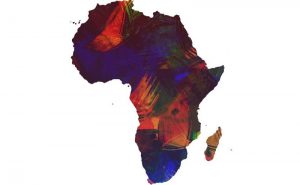Learning the Lived Experience; differences between lived and learned experiences in non-profit storytelling
As a young African professional working on International Development issues (outside of the continent), it is an interesting position to be maneuvering especially when it comes to the stories and narratives being projected about marginalized populations within.
On one hand, I understand the rationale behind communication and marketing tools to connect donors to harsh realities. On the other hand, I am often conflicted with the impact of these narratives which are shown to individuals who are far removed from such situations. One common method used is to depict imagery of my people in desperate circumstances to tap into empathy and build compassion which in turns gets donations. Further victimizing these people living in these realities and painting them as in need of a ‘savior’.
A key mandate of my participation in this fellowship is to explore the issues of diversity and inclusion within fundraising. And given that storytelling is one of the fundamental tools of fundraising, I often find that the tactics used to tell these stories aren’t always in the most inclusive ways. Especially given that most times these stories are being told not by its protagonists but by a voice that is quite detached from the scenario and has no knowledge of it. Time and time again we see this narrative of the power of the global “west” over the “south”. The idea that the south is a civilization that needs the west to solve their problems and issues, a visible example that pops up in my mind, is the World Bank’s SAP programs in Africa in the 90’s. Like so many other programs in history, the SAPs were designed as savior to these “unfortunate” people, however, the only saving that happened was the creation of a complete disaster and wasting of resources.
Being an individual with lived experiences on the issues that these organizations are advocating for, the stories projected are often those of my sisters, my aunties, neighbors etc. These organizations serve as the gatekeepers of aid and ambassadors for these populations. This means that they have the power to bring knowledge to the public’s perceptions of the population being served. The knowledge here is often a big issue, because it is ‘created’ by them, it is their idea and understanding of what the problem and solution is without including the voices of the ones involved in the issues And it is great for there to be support, but how much longer must we see an African child “with a fly on their face” or a white individual standing in front of an impoverished child in a slum reiterating their story. Simply put – I call this exploitation of human deprivation and it kills me, the lack of context.
I must not discount some dope organizations who are doing great work in telling stories through positive and inclusive lenses but I believe there is a real opportunity for a wider shift of storytelling as a sector. On a personal level, I have made it my mission and goal to curate positive narratives of Africa as a diverse continent through the work that I do.
In a conversation with a Marketing Storytelling Expert, Mo Waja, I explore further this topic around storytelling in fundraising and the importance of inclusivity behind the person telling the story. When it comes to storytelling, if you don’t have the lived experience here are some tips to keep in mind:
- The person telling the story matters: it really has to come from the voice of the population’s spoken about;
- Context is important and should never be discounted;
- Do stories from the field: if you can be in the field/on the ground of where your programs are implemented, DO IT!
You can listen to the episode on the Let’s Talk Show’s website: https://theletstalkshow.ca/podcast/e26
Sources:
Shah, Anup. “Structural Adjustment-a Major Cause of Poverty.” – Global Issues, 24 Mar. 2013, www.globalissues.org/article/3/structural-adjustment-a-major-cause-of-poverty.







